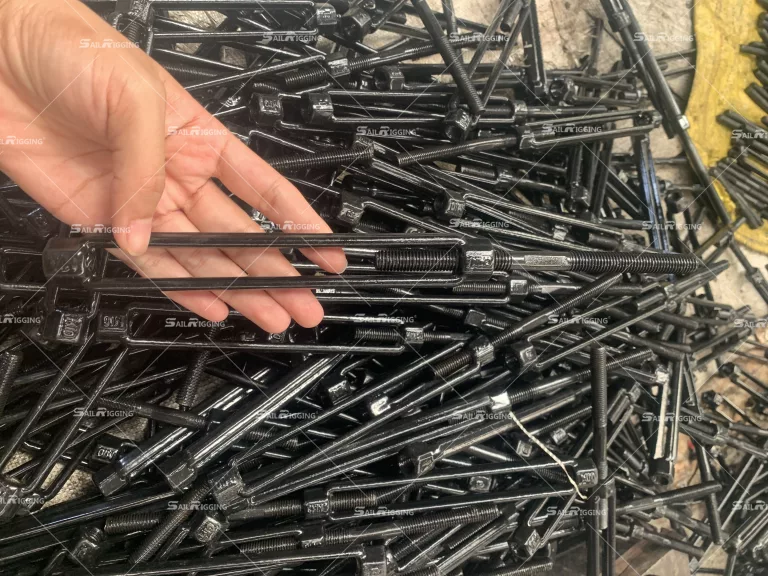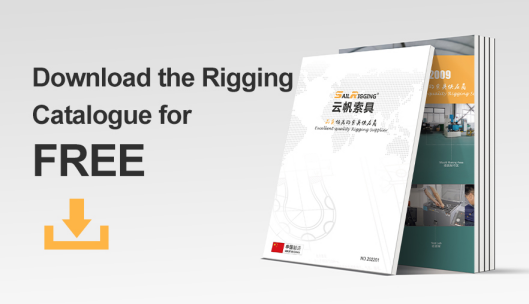Tie rod assemblies play a critical role in various construction, architectural, and industrial applications. Consisting primarily of a threaded rod and a turnbuckle, tie rod assemblies provide essential support and stabilization for structures that require tensioning. Available in different materials and surface finishes, tie rod assemblies are customizable to suit specific project needs, offering versatility in both strength and corrosion resistance. In this article, we’ll break down the key components, surface finishes, materials, and typical applications of tie rod assemblies.
- What area Tie Rod Assemblies?
Tie rod assemblies, a type of turnbuckle with threaded rod, are used to stabilize or support structures by applying tension through a threaded rod and turnbuckle. Tie road assemblies are widely used in cross bracing, canopies, pipe hangers and seismic upgrades. It is an efficient way to adjust tension an maintaining structural integrity. The turnbuckle body is US type forged turnbuckle, or DIN1480 turnbuckle body.
This tie rod assembly is UNC or metric thread, the length of threaded rod could be customized. The turnbuckle is threaded at one/both ends and can be rotated to tighten or loosen the rod, providing precise control over the tension.
2.Surface Finishes for Tie Rod Assemblies
The surface finish of a tie rod assembly is essential for its durability and resistance to environmental factors. Usually the body of turnbuckles are powder coated, the threaded rod is black oxide. Powder coating is available in a wide range of colors and is ideal for projects that require both visual appeal and long-term protection. Powder coating is highly resistant to chipping, scratching, fading, and wearing, making it suitable for both indoor and outdoor applications.
3.Materials Used in Tie Rod Assemblies
Tie rod assemblies are primarily made from carbon steel or stainless steel, each of which offers distinct advantages based on the application requirements.
Carbon steel is the most common material used for tie rod assemblies, offering a good balance of strength, durability, and cost-effectiveness. It is ideal for general-purpose use and provides excellent tensile strength. However, carbon steel is more prone to corrosion, which is why it is often finished with either powder coating or galvanization for added protection.
Stainless steel is a high-performance material known for its corrosion resistance and strength. Tie rod assemblies made from stainless steel are ideal for use in highly corrosive environments, such as marine applications or places with high exposure to chemicals. Stainless steel’s resistance to rust and tarnishing makes it a long-lasting option, though it tends to be more expensive than carbon steel.
4.Applications of Tie Rod Assemblies
Tie rod assemblies are widely used in a variety of industries and applications. Their primary function is to stabilize structures by providing tension between anchor points, and they are especially useful for the following:
Architectural Applications
Tie rod assemblies are used in structural design to reinforce and support building frameworks. For instance, they are often found in the construction of tensioned canopies, roof trusses, and other architectural elements that require precise tensioning for stability. In these applications, tie rods act as key support components, helping to distribute loads and maintain structural integrity.
Cross Bracing
Cross bracing is a method of reinforcing a structure to prevent lateral movement. Tie rod assemblies are commonly used in bracing systems, especially in towers, bridges, and large buildings, to provide tension that prevents movement due to wind, seismic forces, or other stresses. By connecting opposing sides of a structure, cross bracing ensures that the load is shared evenly and that the structure remains stable.
Canopies and Tensioned Structures
Tie rod assemblies are integral to canopy structures and other forms of tensioned architecture, where the load is distributed across a flexible surface. These applications require precise tensioning to ensure that the canopy or structure maintains its shape and does not collapse under external pressures, such as wind or snow.
Pipe Hangers
Tie rods are frequently used in the installation of pipe hangers in industrial facilities, oil refineries, and utilities. By applying tension to the rods, pipes can be securely suspended from ceilings or walls, ensuring that they are safely held in place while allowing for movement due to temperature changes or other factors.
Seismic Upgrades
In areas prone to earthquakes, tie rod assemblies are crucial in seismic retrofitting and upgrades. These assemblies help reinforce buildings and other structures, ensuring that they can withstand the forces of an earthquake. By providing tension in strategic locations, tie rods help prevent building movement and reduce the risk of structural damage.
Finally, Tie rod assemblies, consisting of a threaded rod and turnbuckle, offer a versatile and reliable solution for a wide range of construction, architectural, and industrial applications. If you are not experienced in dealing with tie rod assemblies, you may not understand all of the necessary information that is required to ensure that you receive the proper components for the tie rods to function correctly and assemble smoothly. Sail Rigging’s experienced sales staff is trained to provide professional advice to ensure you receive the correct components. Contact Sail Rigging right now.





